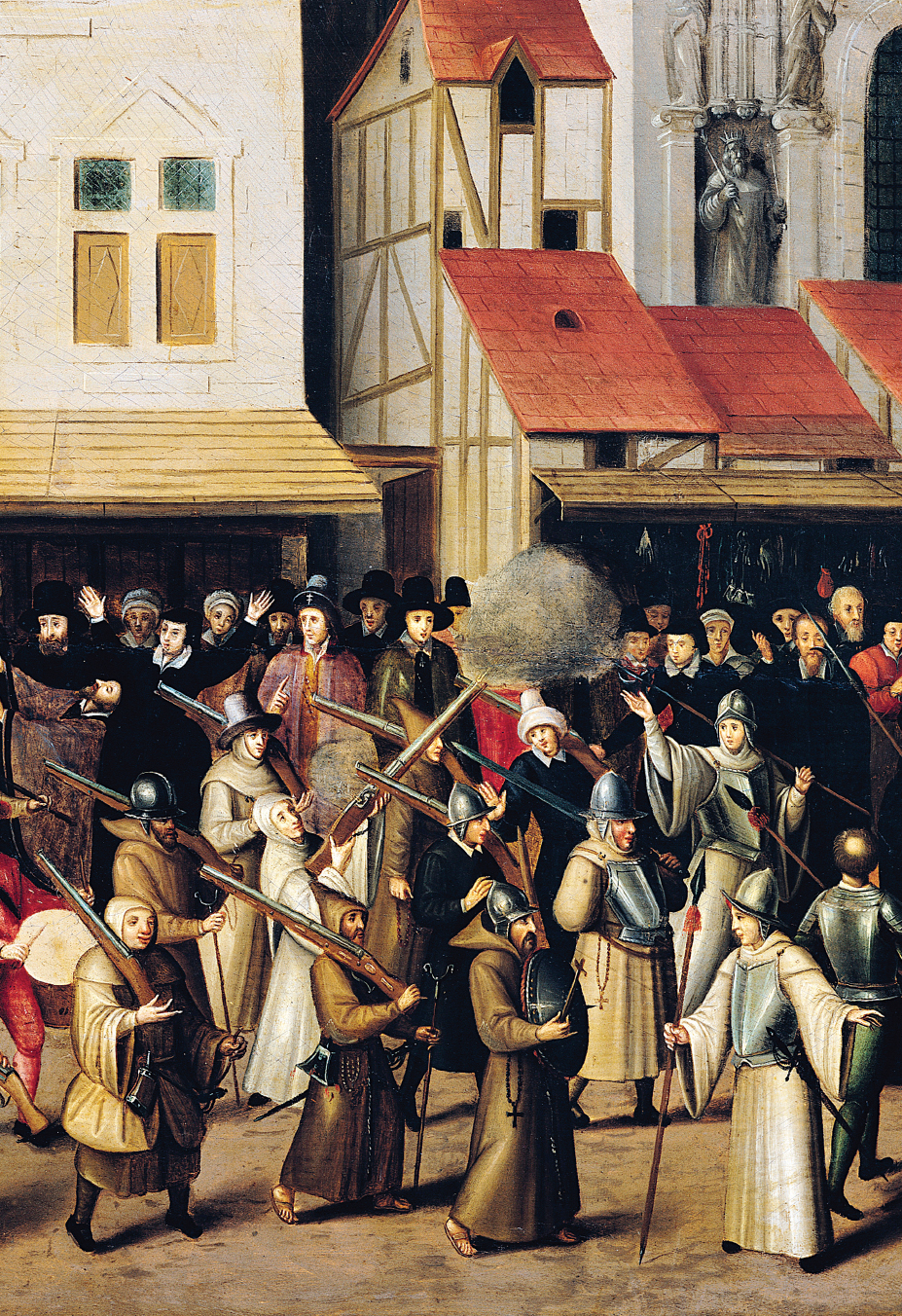Introduction for Chapter 13
13. Reformations and Religious Wars, 1500–1600
>What were the causes and consequences of religious division in sixteenth-
LearningCurve
After reading the chapter, use LearningCurve to retain what you’ve read.

>What were the central ideas of the early reformers?
>How did politics in Germany shape the course of the Reformation?
>How did Protestant ideas and institutions spread beyond German-speaking lands?
>What reforms did the Catholic Church make?
>What were the causes and consequences of religious violence?
| 1517 | 1542 |
| – Martin Luther writes “Ninety- |
– Pope Paul III establishes the Supreme Sacred Congregation of the Roman and Universal Inquisition |
| 1521 | 1545– |
| – Diet of Worms | – Council of Trent |
| 1521– |
1553– |
| – Habsburg- |
– Reign of Mary Tudor and temporary restoration of Catholicism in England |
| 1525 | 1555 |
| – German Peasants’ War | – Peace of Augsburg; official recognition of Lutheranism |
| 1526 | 1558– |
| – Turkish victory at Mohács, which allows spread of Protestantism in Hungary | – Reign of Elizabeth in England |
| 1530s | 1560– |
| – Henry VIII ends the authority of the pope in England | – Height of the European witch- |
| 1535 | 1568– |
| – Angela Merici establishes the Ursulines as first women’s teaching order | – Civil war in the Netherlands |
| 1536 | 1572 |
| – John Calvin publishes The Institutes of the Christian Religion | – Saint Bartholomew’s Day massacre |
| 1540 | 1588 |
| – Papal approval of Society of Jesus (Jesuits) | – England defeats Spanish Armada |
| 1598 | |
| – Edict of Nantes |